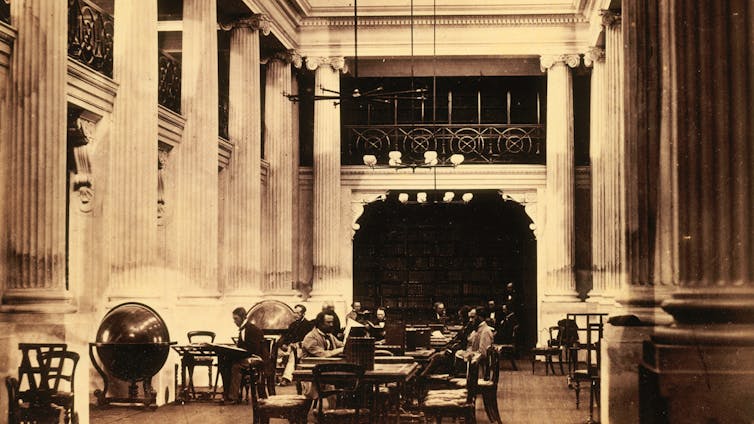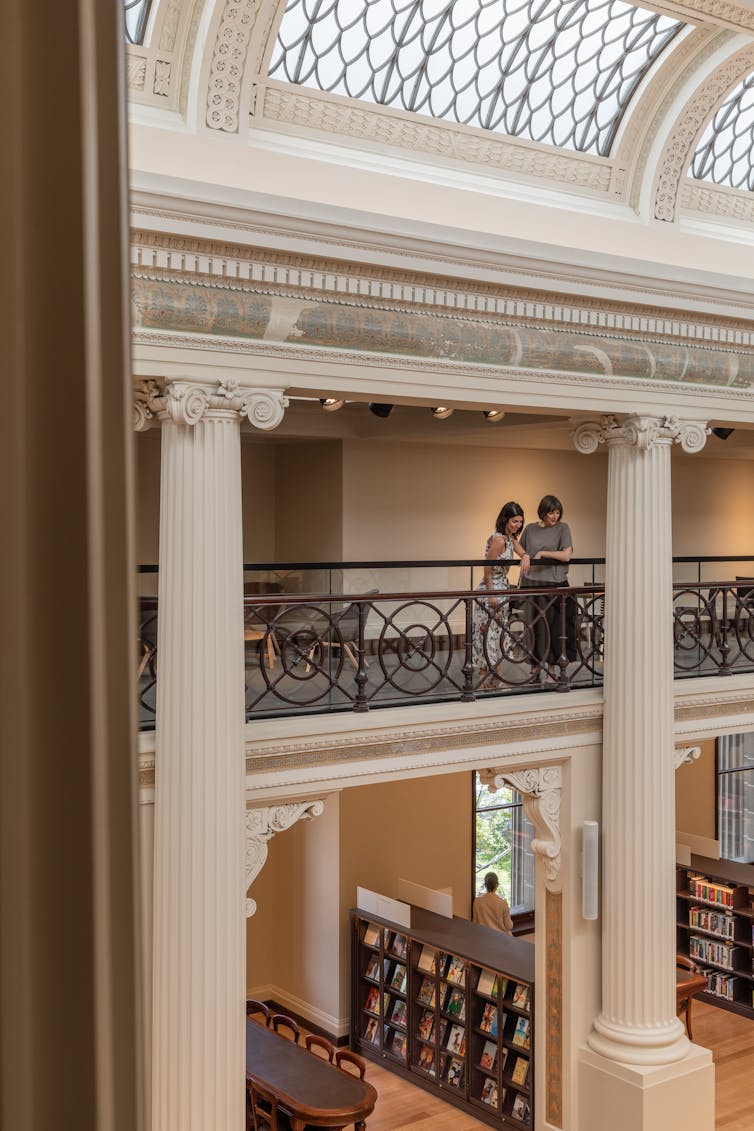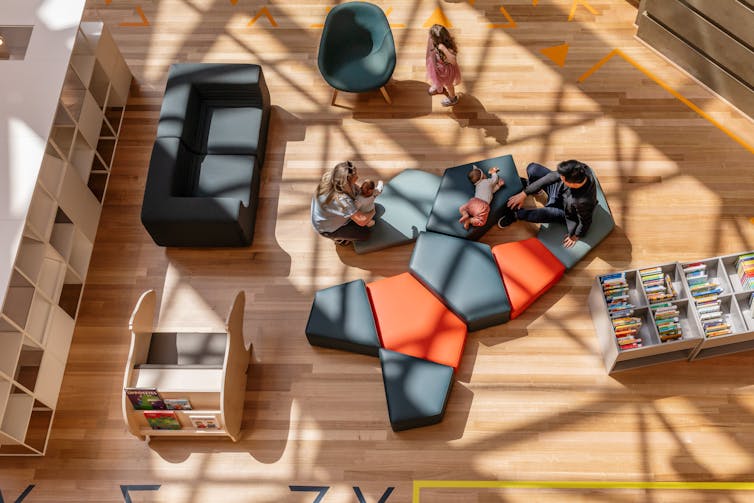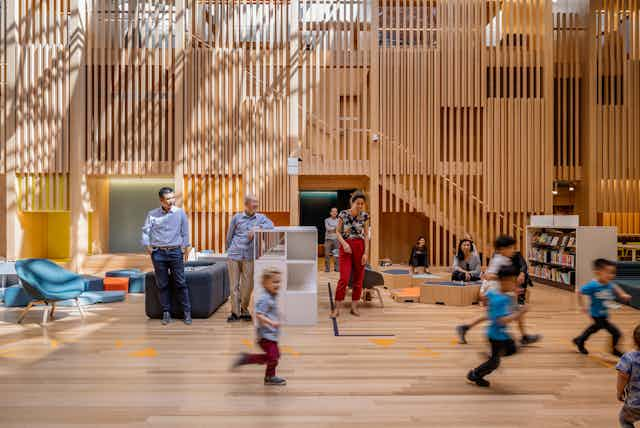Public libraries embody the values of democracy by offering free access to knowledge. But the role of contemporary public libraries extends far beyond access to books.
Libraries are places for learning and discovery, forums for debate, galleries for exhibitions and events, and spaces for work and pleasure. As cultural centres and community hubs, libraries bring people together.
With the rise of digital information early this century, the death of the library was predicted. Yet far from causing the demise of libraries, the digital revolution has led to libraries being reinvented and reinvigorated.
Library staff are experts in knowledge systems and adept at seizing the possibilities presented by these changes. This ability to innovate ensures public libraries remain relevant and vital.
Read more: How public libraries can help prepare us for the future
Such innovation is evident throughout Melbourne’s State Library Victoria which reopened this week to reveal the final phase of its Vision 2020 transformation. The transformation of Australia’s oldest – and now newest – library is cultural, social, economic and architectural.
State Library Victoria already holds a prominent place in Melbourne’s cultural and urban fabric. It is now ready for the future.
Less is more
Good civic architecture embodies the needs of the community it serves, amplifying and adapting to the activities and lived experiences in it.
Australia’s first free public library when it opened in 1856, State Library Victoria offered everyone access to knowledge for self-advancement.

Today, the revitalised heritage reading rooms remain majestic symbols with their large lofty ceiling and voluminous spaces with natural light . People may wish to linger in these hushed traditional spaces and return.
This major redevelopment was entrusted to Australian design studio Architectus in partnership with Danish firm Schmidt Hammer Lassen Architects. Their work demonstrates great restraint and respect for the original building, coupled with the creation of new spaces, connections and opportunities relevant to libraries of now and the future with a thoughtful approach of less is more.
Fine design details skilfully juxtapose the old and the new. New stone covers the historic and slippery marble stairs that head up from the Swanston Street foyer, the original treads visible at each edge. Long admired murals above the stairs are conserved.

Entering from Swanston Street, The Quad is the contemporary centerpiece, beyond the foyer of the library. It provides a welcome zone that invites people of all ages, interests and backgrounds to enjoy the wonder of learning. This invitation can be simple: a place to charge your phone, to talk with friends, to escape the weather. Simple activities that make you stop and pause, and want to venture further and find out more.
Ideas Quarter offers shared work space for budding entrepreneurs. Conversation Quarter is a tech-rich destination for sharing, connecting and broadcasting ideas. Create Quarter includes recording, mixing and editing facilities. Children’s Quarter is a playful multi-level realm for family exploration with age-specific areas and programs.

In this sequence of spaces, knowledge is everywhere, yet books are few.
The Quad is not the hushed or book-filled library experience you might expect. But those calmer spaces are still there, undisturbed by all this new activity thanks to careful acoustic design: a balance between the traditional and the new.
In the beautiful Ian Potter Queen’s Hall, the visitor catches glimpses of decorative paintwork in the Classical Greek style, discovered under layers of paint during the restoration.
Curiosity thrives in libraries, and the curious will uncover more.

Libraries are for people
In an increasingly digital age, what can public libraries offer that our smartphones and computers cannot?
They offer community.
Many Victorian voices informed the Vision 2020 project: community groups, library users, local residents, business, school students, parents. These voices inspired the enriched diversity of services and experiences. The Library Board, state government, benefactors, and community fundraising made the vision possible.
The process was democracy in action.
Read more: Friday essay: the library – humanist ideal, social glue and now, tourism hotspot
Public, school and university libraries have all evolved to embrace a broader understanding of lifelong learning including and beyond what can be learnt from books. Libraries bring people together.

These institutions contribute to social capital by fostering new relationships, sustaining and advancing informed communities and offering equity to close the digital divide.
New library spaces can elevate the human experience, and State Library Victoria proves public libraries have an exciting future.

